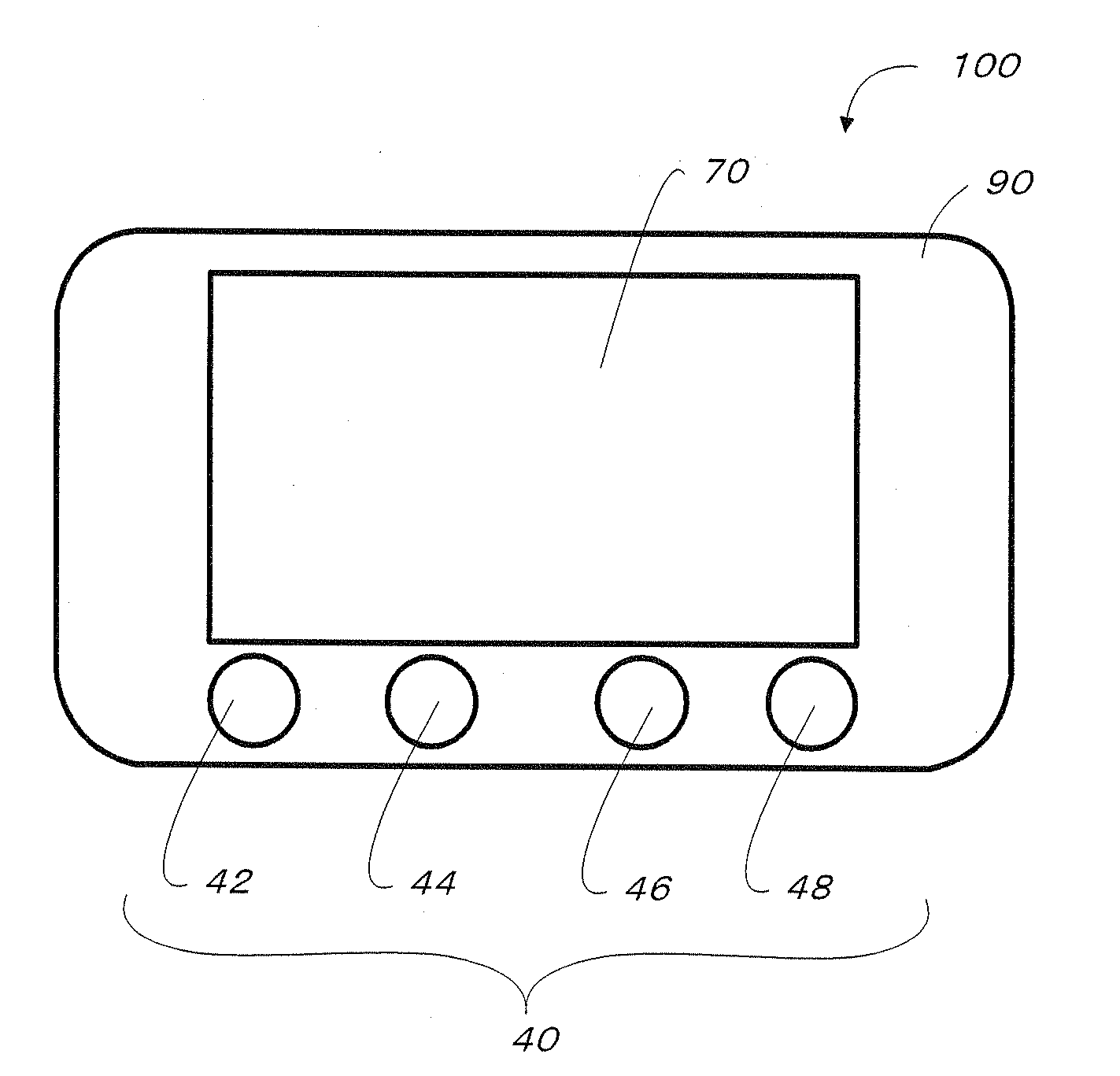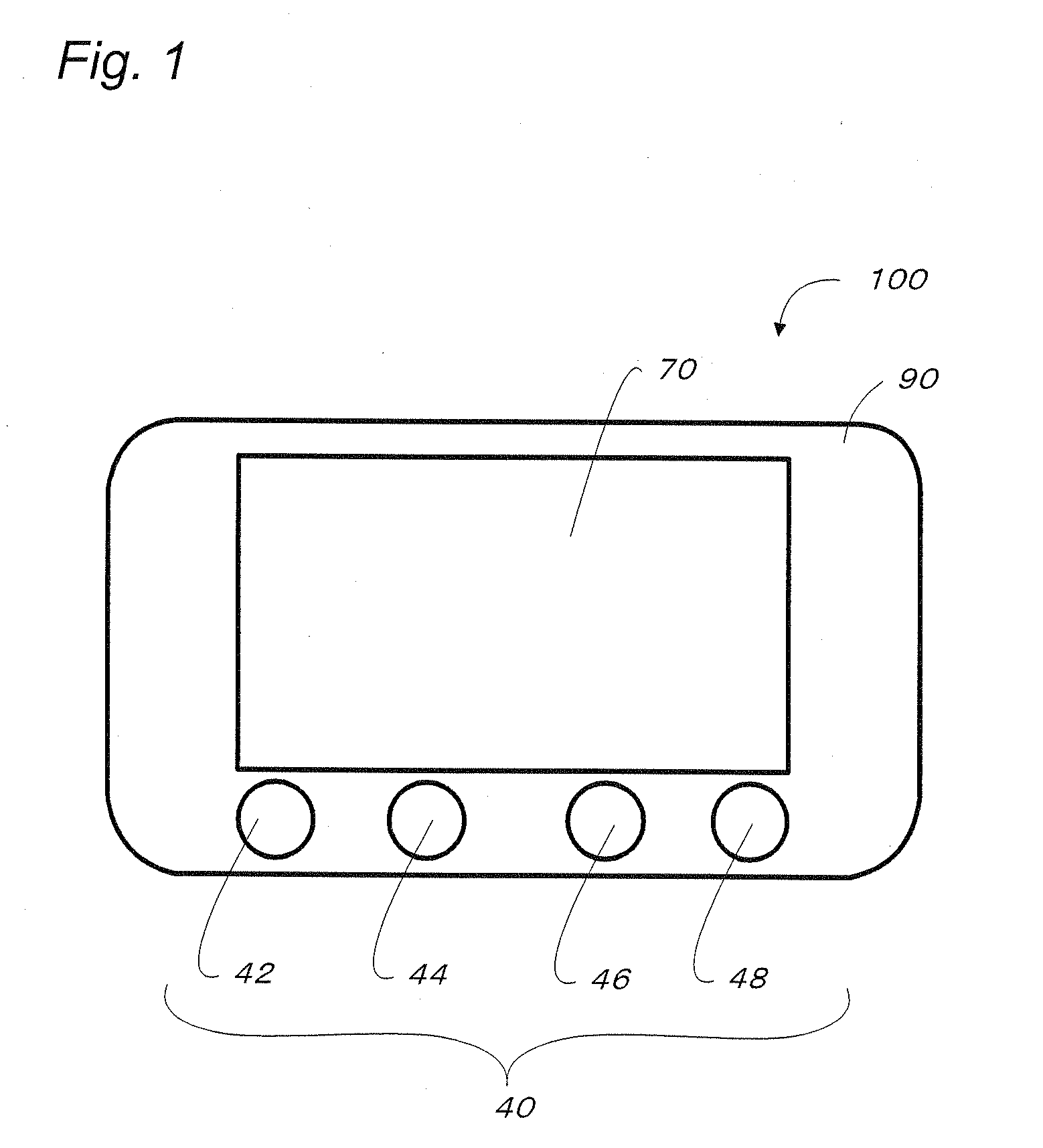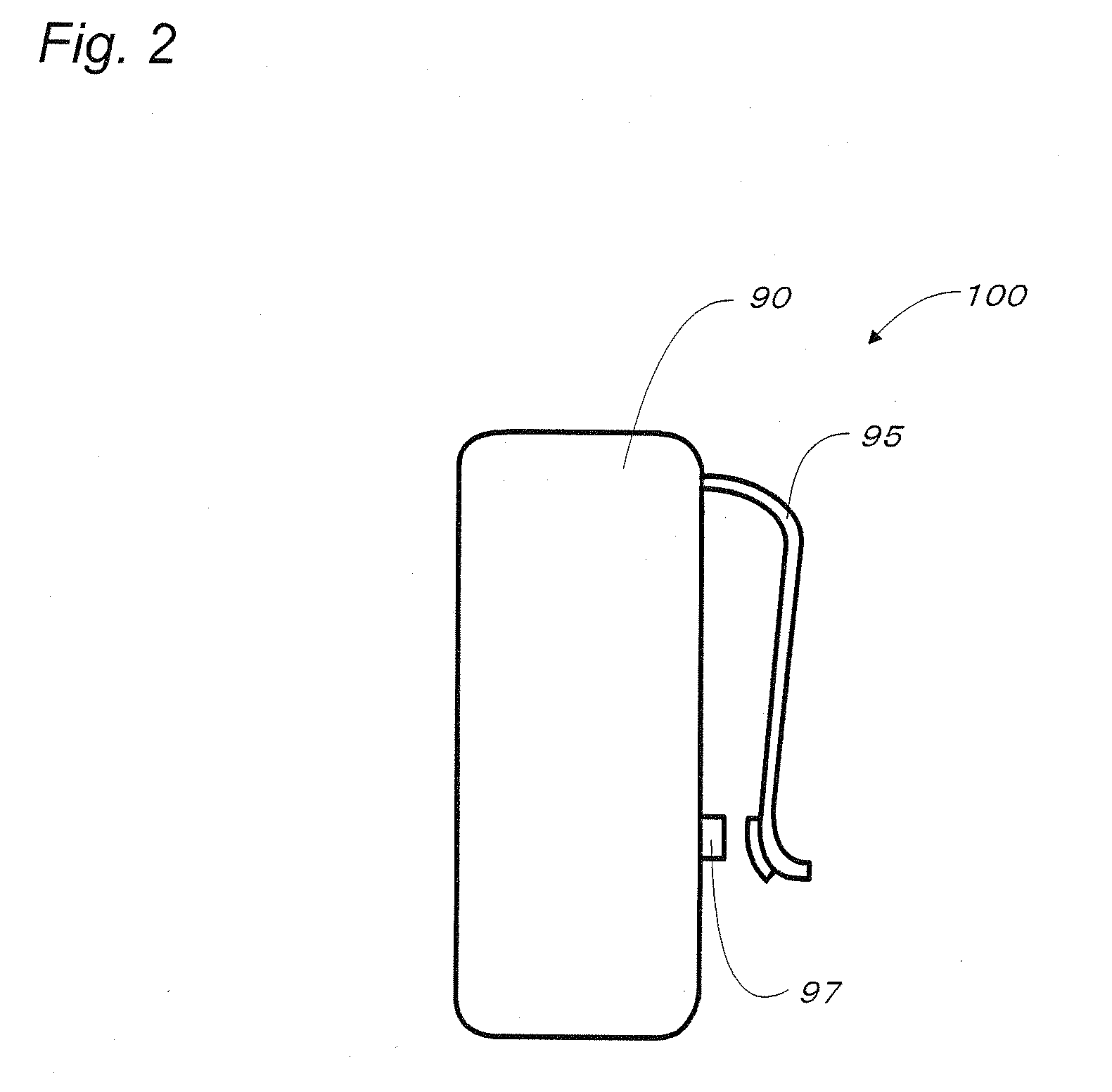Activity intensity measurement device
- Summary
- Abstract
- Description
- Claims
- Application Information
AI Technical Summary
Benefits of technology
Problems solved by technology
Method used
Image
Examples
first embodiment
[0026]An activity intensity measurement device in this embodiment is explained on the basis of FIG. 1 to FIG. 3. The activity intensity measurement device 100 in this invention comprises a housing 90, an equipment sensor 15, an acceleration sensor 10, a sampling circuit 20, a representative value calculation circuit 30, a nonvolatile memory 50, an activity intensity determination circuit 34, a pedometer 60, an operation means 40, a volatile memory 55, an operation processing circuit 38, a display 70, and a power source 80. The housing 90 is provided at its rear surface with a holder for adaption by a user. The equipment sensor 15 is configured to detect whether or not the user equips the activity intensity measurement device. The acceleration sensor 10 is configured to detect the acceleration which is generated according to the user's motion. The sampling circuit 20 is configured to sample the acceleration that the acceleration sensor detects. The representative value calculation ci...
second embodiment
[0052]The activity intensity measurement device 100 in this embodiment has a representative value calculation circuit 30 which is different from the representative value calculation circuit 30 in the first embodiment. However, the other configurations in the second embodiment are same as the configurations in the first embodiment. Therefore, the configurations in this embodiment same as the first embodiment is designated by the same reference numeral in the first embodiment. In addition, explanations of the configurations in the second embodiment same as the first embodiment is omitted.
[0053]The representative value calculation circuit 30 in this embodiment is configured to calculate the representative value VR. The representative value VR is defined by a standard deviation of resultant value of the accelerations xi, yi, and zi of x-axis, y-axis, and z-axis within the unit period T. The resultant value of the acceleration xi, yi, and zi of the x-axis, y-axis, and z-axis is defined a...
third embodiment
[0056]The activity intensity measurement device 100 comprises a representative value calculation circuit 30 which is different from the representative value calculation circuit 30 in the first embodiment. However, the configurations except for the representative value calculation circuit 30 in the third embodiment are same as the configurations of the activity intensity measurement device in the first embodiment. Therefore, the configurations in the third embodiment same as the first embodiment are designated by the same reference numerals. In addition, the explanation of the configurations in the third embodiment same as the first embodiment is omitted.
[0057]The representative value calculation circuit 30 in the third embodiment is configured to calculate difference between the acceleration xi of the x-axis and a predetermined standard value, difference between the acceleration yi of y-axis and a predetermined standard value, and difference between the acceleration zi of the z-axis...
PUM
 Login to View More
Login to View More Abstract
Description
Claims
Application Information
 Login to View More
Login to View More - Generate Ideas
- Intellectual Property
- Life Sciences
- Materials
- Tech Scout
- Unparalleled Data Quality
- Higher Quality Content
- 60% Fewer Hallucinations
Browse by: Latest US Patents, China's latest patents, Technical Efficacy Thesaurus, Application Domain, Technology Topic, Popular Technical Reports.
© 2025 PatSnap. All rights reserved.Legal|Privacy policy|Modern Slavery Act Transparency Statement|Sitemap|About US| Contact US: help@patsnap.com



